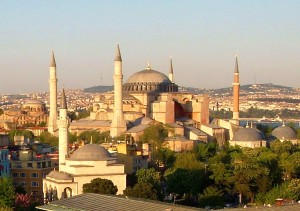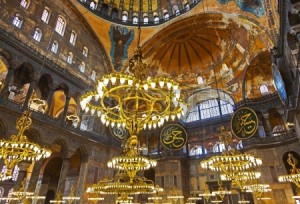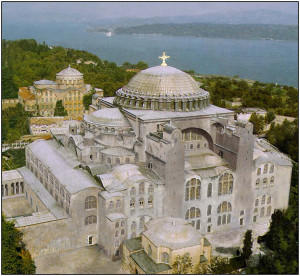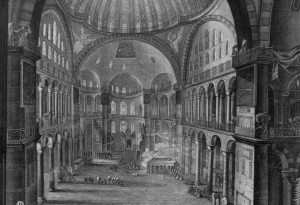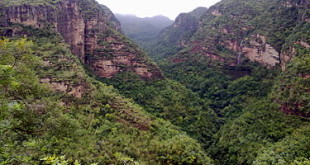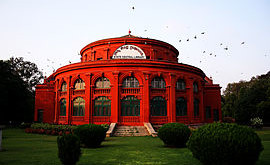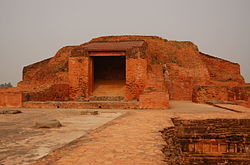‘The Eighth wonder of the world, someone had called this place, and standing in front of it now, Langdon was not about to argue with that assessment.
So vast was this room that it seemed to dwarf even the great cathedrals of Europe.
Hagia Sophia required only an instant to impress upon its visitors the sheer magnitude of its proportions.’
These are merely a few of the lines through which Dan Brown describes Hagia Sophia in his latest novella ‘Inferno’.
Placed in the center of Istanbul, Turkey; Hagia Sophia (pronounced as Ayasofya) is a monument of great religious as well as architectural importance. Hagia Sophia is the only place of worship in the world housing 3 different religions that is; Paganism, Orthodox Christianity, and Sunni Muslim. How the place has been transformed according to the tastes of these religions is a different story in itself.
“People of any faith must see this holy place. It is moving to let your soul reflect and to let your thoughts and prayers soar.”, says Alina Anton, a traveller from Budapest. Indeed, the places move you; not just by its meticulous architecture and rich carvings but through the influx of emotions, it brings within. As we enter through the slabs of its marble doors, our eyes climb skywards to the sprawling golden dome that crowns its centre with arches radiating like rays of the sun. Taking in its enormity gradually, our eyes wander through the sea of gleaming chandeliers hanging between Islamic iconography and remains of the basilica creating a rather strong friction between such deviant religions. As we descend upstairs, (mind you through a 330-gallon behemoth carved from a single piece of marble!) which houses the series of mosaics, the monument is famous for- each with a story of its own.
Hagia Sophia ranks 4 in the recent list of Top Ten Most Beautiful Places in the world put out by Lonely Planet. To know what makes this museum so unique and mysterious at the same time, read on!
After the destruction suffered in the Byzantine Empire by the Nika Revolt (536 BC), Justinian the Great wanted to construct a church that could replace all of the great cathedrals existing in the world. For this, he called upon his most valuable men- Anthemius of Tralles and the Elder Isidore of Miletus.
Speaking as of today, we can’t resist mounting our eyes to the to its ceiling we are able to observe the dome-shaped top super structured by an array archaic beams of medieval architecture, a first of its kind- nothing but a monumental genius of these two men.
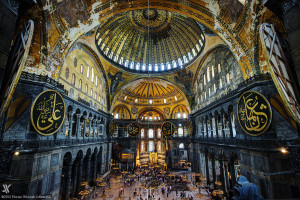
After the advent of Constantinople in the land of Turkey, Constantine the Great ordered an end-to-end transformation of the pagan temple into a church, to be known as ‘Magna Ecclesia’ (Great Church) in 360 BC. This led to the addition of a wooden basilica, spiral aisles, atrium and a series of impressionist mosaics existing even today.
The unimaginable change came to the fate of Hagia Sophia on the day of 29th May 437 when the Sultan of ottoman Empire, Mehmet II conquered the Byzantine Empire headquarters of Turkey. Apparently, it had been prophesied by the Muhammad that the first Muslim to pray in Hagia Sophia would go to paradise.
Following the legend was none other than Mehmet, who decreed the conversion of the Great Church into a mosque. This made the monument be adorned by western minarets, two mausoleums, a mihrab; only mystifying its look even more.
As of today, Hagia Sophia stands as an unmissable museum among the streets of Istanbul, attracting a diverse crowd from around the world. Coming under the hands of so many emperors in its time couldn’t spare the building from secrets and mysteries whispering through its halls.
Treasures that the temple has accounted for the house are relics such as the shroud of Mary, nails from the true cross and the tombstone of Jesus. Who can boast of any of that?!
Well, talking of mysteries, one mystery that timely germinates in its underground is that of crypts or rather the lack of it. Underground chambers and crypts were a prominent feature of early Christian churches, therefore, it doesn’t make sense that Justinian’s men missed out such an important architectural symbol in their creation. What if we say the symbols haven’t been missed but just hidden? At least that’s the myth which roams through its corridors.
Underground tunnels of early places of worship were famed with the tombs of great spiritual leaders of the time and so were those of Hagia Sophia. It has been noted that the vast escapes beneath have been honoured with the bodies of Adam, St. Peter, Sultanahmet and many others, especially during the Black Death. It has also been sparked that the halls of the museum still surround the aches and pains of all those in the Black Death, not just speaking though its mosaics but its walls too. Although, no information about any underground burials in the place exist.
Well, legends will remain legends and myths, will remain what we make of them. Though, none of this can supersede all that the museum stands for today. Roaming through Persian artefacts and Catholic impressionism, teachings of Muhammad and verses of the Bible, Hagia Sophia is the epitome of cross-culturalism- of the vivid differences and the subtle similarities of rulers, of faiths, of people and of perceptions; and magnanimity of the Supreme One, above all.
 The Holy Connection An Alternative Exploration of Existence
The Holy Connection An Alternative Exploration of Existence

